|
Normally light radiates outward equally in all directions from the source. However the spotlight
keyword can be used to create a cone of light that is bright in the center and falls of to darkness in a soft fringe
effect at the edge.
Although the cone of light fades to soft edges, objects illuminated by spotlights still cast hard shadows. The
syntax is:
SPOTLIGHT_SOURCE:
light_source
{
<Location>, COLOR spotlight
[LIGHT_MODIFIERS...]
}
LIGHT_MODIFIER:
SPOTLIGHT_ITEM | AREA_LIGHT_ITEMS | GENERAL_LIGHT_MODIFIERS
SPOTLIGHT_ITEM:
radius Radius | falloff Falloff | tightness Tightness |
point_at <Spot>
Default values:
radius: 30 degrees
falloff: 45 degrees
tightness: 0
The point_at keyword tells the spotlight to point at a particular 3D coordinate. A line from the
location of the spotlight to the point_at coordinate forms the center line of the cone of light. The
following illustration will be helpful in understanding how these values relate to each other.
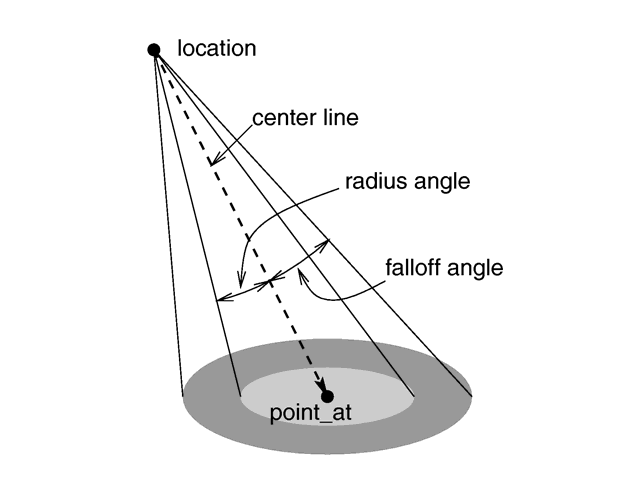
The falloff, radius, and tightness keywords control the way that light
tapers off at the edges of the cone. These four keywords apply only when the spotlight or cylinder
keywords are used.
The falloff keyword specifies the overall size of the cone of light. This is the point where the light
falls off to zero intensity. The float value you specify is the angle, in degrees, between the edge of the cone and
center line. The radius keyword specifies the size of the "hot-spot" at the center of the cone
of light. The "hot-spot" is a brighter cone of light inside the spotlight cone and has the same center line.
The radius value specifies the angle, in degrees, between the edge of this bright, inner cone and the
center line. The light inside the inner cone is of uniform intensity. The light between the inner and outer cones
tapers off to zero.
For example, assuming a tightness 0, with radius 10 and falloff 20 the light
from the center line out to 10 degrees is full intensity. From 10 to 20 degrees from the center line the light falls
off to zero intensity. At 20 degrees or greater there is no light.
Note: if the radius and falloff values are close or equal the light intensity drops
rapidly and the spotlight has a sharp edge.
The values for the radius, and tightness parameters are half the opening angles of the
corresponding cones, both angles have to be smaller than 90 degrees. The light smoothly falls off between the radius
and the falloff angle like shown in the figures below (as long as the radius angle is not negative).
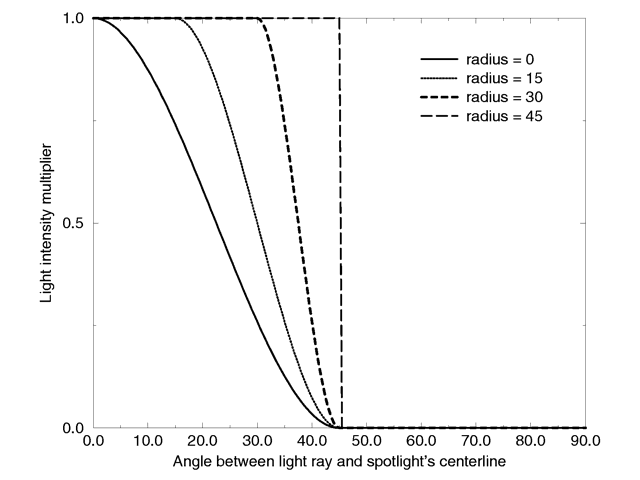
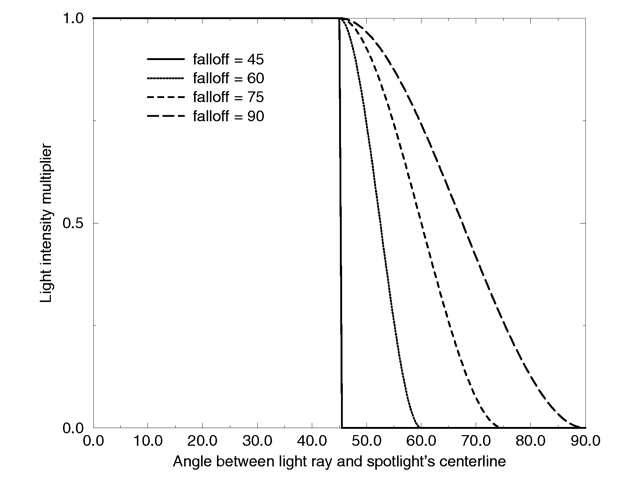
The tightness keyword is used to specify an additional exponential softening of the edges. A
value other than 0, will affect light within the radius cone as well as light in the falloff cone. The intensity of
light at an angle from the center line is given by: intensity * cos(angle)tightness. The default
value for tightness is 0. Lower tightness values will make the spotlight brighter, making the spot wider and the edges
sharper. Higher values will dim the spotlight, making the spot tighter and the edges softer. Values from 0 to 100 are
acceptable.
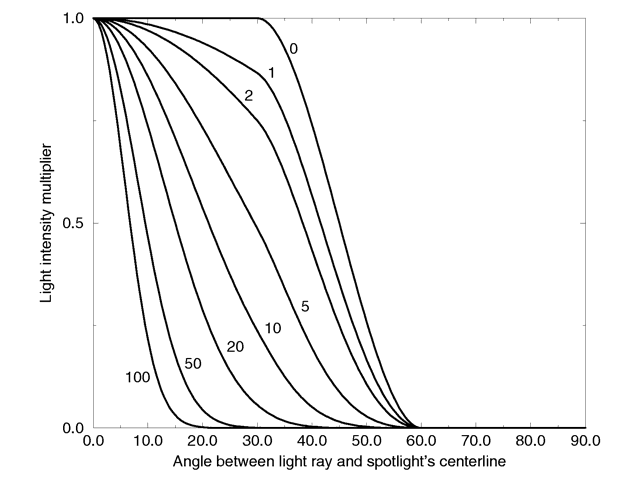
You should note from the figures that the radius and falloff angles interact with the tightness parameter. To give
the tightness value full control over the spotlight's appearance use radius 0 falloff 90. As you can see from the
figure below. In that case the falloff angle has no effect and the lit area is only determined by the tightness
parameter.
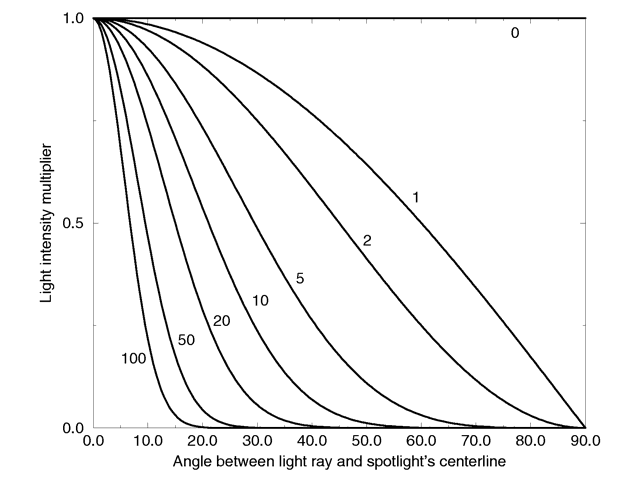
Spotlights may be used anyplace that a normal light source is used. Like any light sources, they are invisible.
They may also be used in conjunction with area lights.
|






